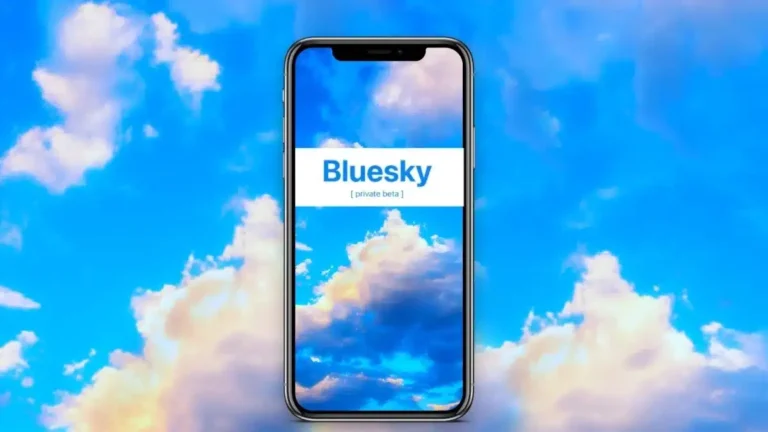Your sales teams are swamped. They’re struggling to keep up with endless customer queries and missing out on potential leads. But don’t hit the panic button yet because chatbot marketing is here to save the day.
How?
You’ll find out that as we delve deeper into this topic. Explore the different ways you can employ chatbots and have them play a central role in your marketing strategies. Plus, you’ll learn the best chatbot implementation practices to help you stay on the right path.
So, get ready to equip yourself with action points and ideas on what to do once you have a chatbot in your arsenal.
Let’s dive in.
What Is Chatbot Marketing?
Chatbot marketing is the integration of AI-driven chatbots into communication channels and enhancing user experience by engaging customers in real-time.
Additionally, it automates repetitive marketing tasks like lead generation and feedback collection. It frees up your marketing manpower to focus on more complex, strategic tasks while making sure that customer engagement stays high and responsive.
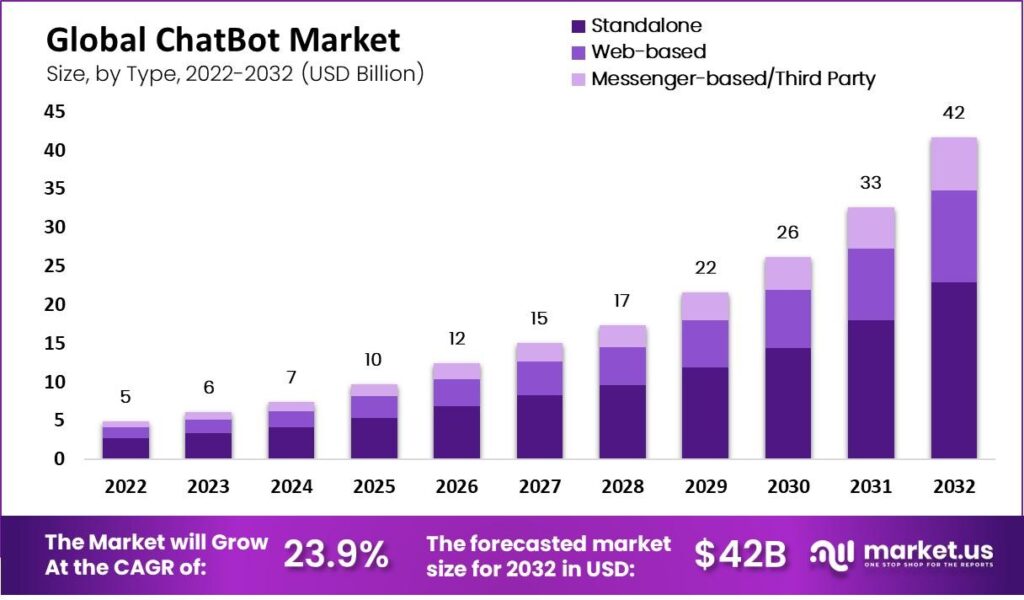
That’s why it’s not surprising that the chatbot market will continue to grow significantly over the years based on the forecast. Its versatility, various types, and continuous improvement are going to be enticing choices for businesses.
Take Domino’s Pizza, for instance. Its Facebook Messenger chatbot lets customers place their orders directly through chat, streamlining the ordering process. Through its chatbot, Dominos guarantees that its marketing efforts resonate with the modern consumer’s need for instant, efficient interactions.
Now let’s get into the different roles that chatbots play for your brand. Understanding how you can leverage them will help you develop chatbot strategies that fit your brand and business goals.
6 Ways To Leverage Chatbots For Your Marketing Efforts
As a forward-thinking business owner, these AI-powered chatbots can exceed your expectations and redefine what you thought possible.
Dive into these 7 chatbot applications and learn how to effectively harness these digital assistants.
1. Lead Generation
Chatbots are more than just digital customer support agents. They’re your powerful tools in the world of conversational marketing. They reshape interactions with customers and act as pivotal lead-generation machines.
Here’s how it works: A visitor lands on your website, and your marketing bot greets them immediately. With quick responses and engaging dialogues, the bot asks qualifying questions, discerning the visitor’s needs and interests.
But more importantly, your brand’s chatbot can capture contact details, making sure potential leads don’t slip through the cracks. This proactive approach funnels visitors into your sales funnel, transforming casual browsers into potential customers.
With this approach, you’ll build a robust pipeline to give you a steady stream of prospects ready to be guided for conversion.
STL Beds’ website chatbot is a great example of this. Their chatbot offers to record the user’s email address and name, making sure that if a human agent doesn’t engage within 2 minutes, their customer service team will reach out via email with the answers.
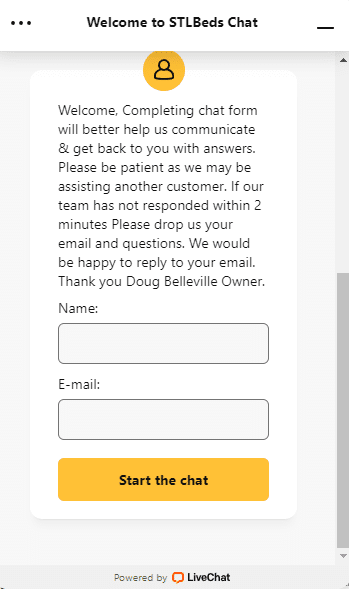
With this strategy, the brand hits two birds with one stone. It lets users know that their customer questions will not go unnoticed even if a human agent is not available at the time. Plus, they get to add the contact details to their pipeline of potential leads, driving their lead generation efforts forward.
2. Lead Qualification
Not all leads are built equal, and going after someone who will lead you nowhere will result in your brand losing important resources. However, identifying who among the sea of website visitors is a high-potential prospect worth pursuing is challenging.
How do you sift through the noise?
Chatbots act as your first line of engagement and qualification. They’ll interact with visitors, ask the right questions, and filter out leads based on relevant responses.
Program them to engage users with specific questions that align with your ideal customer profile. Based on the responses, they can categorize and prioritize leads, adding them to a targeted contact list for your sales team to follow up on.
For example, let’s say you’re in the B2B cybersecurity business. Have your chatbot ask visitors specific questions like:
- What sector does your company operate in?
- How many endpoints does your network have?
- Are you currently using any cybersecurity solutions?
- Have you experienced any security breaches in the past year?
Based on the responses, the chatbot can assess the urgency and relevance of the user’s cybersecurity needs. So, if a visitor indicates they’ve recently experienced a security breach, the chatbot can prioritize this lead, adding them to a ‘high-priority’ contact list for your sales team.
Why? Because that user has an immediate need to employ the best cybersecurity practices and solutions for their company.
What makes this genuinely transformative is how chatbots automate the entire process. What would typically require hours of manual work by customer support teams will now be handled efficiently by the chatbot.
Routine tasks like sorting through customer journeys to identify potential leads become automated, freeing up your team to focus on more complex tasks.
3. Feedback Collection
A successful marketing strategy requires you to understand your audience, and this is where chatbots excel.
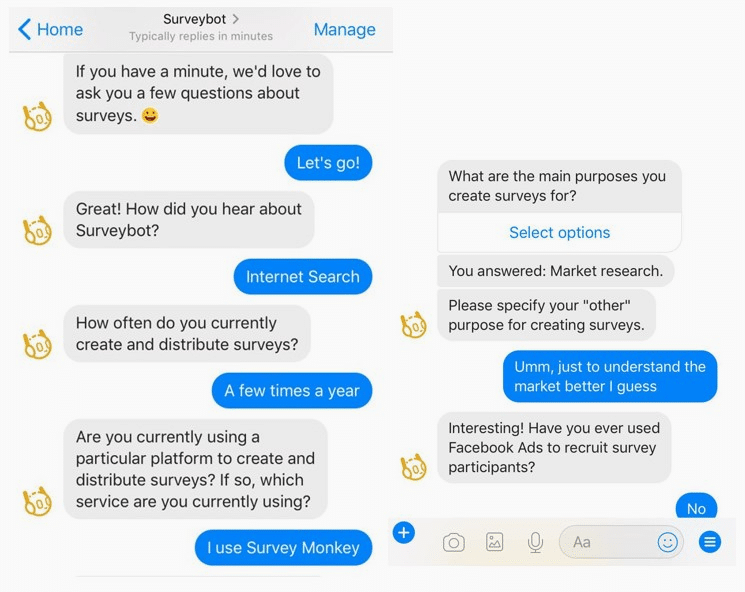
Whether it’s a new product you’ve launched or the overall user experience on your website, chatbots can prompt current customers for their views and sentiments. Thus, helping you seamlessly collect customer feedback.
How do you make them do this?
Integrate chatbot services into multiple platforms like your website, app, or social media channels. Program them to ask pointed questions after they buy your product or use your services.
Here are questions you can ask:
- How did you hear about us?
- How likely are you to recommend our store to a friend?
- What can we do to improve your next shopping experience?
- Did you encounter any issues while shopping with us today?
- How satisfied are you with the checkout process on a scale of 1-5?
You can also set them to pop up during a customer’s browsing experience to gauge real-time reactions, and ask the following questions:
- Do you find our website easy to navigate?
- Are you finding everything you’re looking for?
- Would you like to speak to a customer service representative?
This direct line to customer expectations and preferences provides invaluable insights to continually refine your strategies.
4. Booking & Reservations
In service-based industries, where booking and reservations play a major role, chatbots are a game-changer. So, if your customer is looking to book a hotel room or schedule a product demo, you can have a chatbot pop up, offering instant response and a streamlined booking process.
Within minutes, your customer’s reservation is confirmed, making their experience quick and smooth. This immediate engagement can be the difference between a casual visitor and a committed customer.
For instance, let’s say you’re running an insurance company with limited staff members. A potential client lands on your website, curious but not yet committed. They called your office, but no one answered since everyone was meeting with other clients.
With that, your lead just slipped from you. Frustrating, isn’t it?
That scenario would have turned out way differently with a chatbot. On your website, a chatbot can pop up while a user is browsing, offering to schedule meetings with insurance advisors for personalized advice or quotes.
Continue offering that level of convenience to build customer loyalty. Clients appreciate booking meetings easily, making them more likely to return and even recommend your services.
Moreover, as a brand with limited manpower, a chatbot guarantees that every insurance agent you have prioritizes high-value interactions rather than administrative tasks. Thus, maximizing their time and focusing on closing deals.
5. Personalized Product Recommendations
Chatbots equipped with artificial intelligence are a marketer’s dream to develop personalized customer experiences.
How?
They analyze user behaviour and preferences to suggest products that the customer is likely to be interested in. This enriches the user experience and shortens the sales cycle, increasing the chances of a purchase.
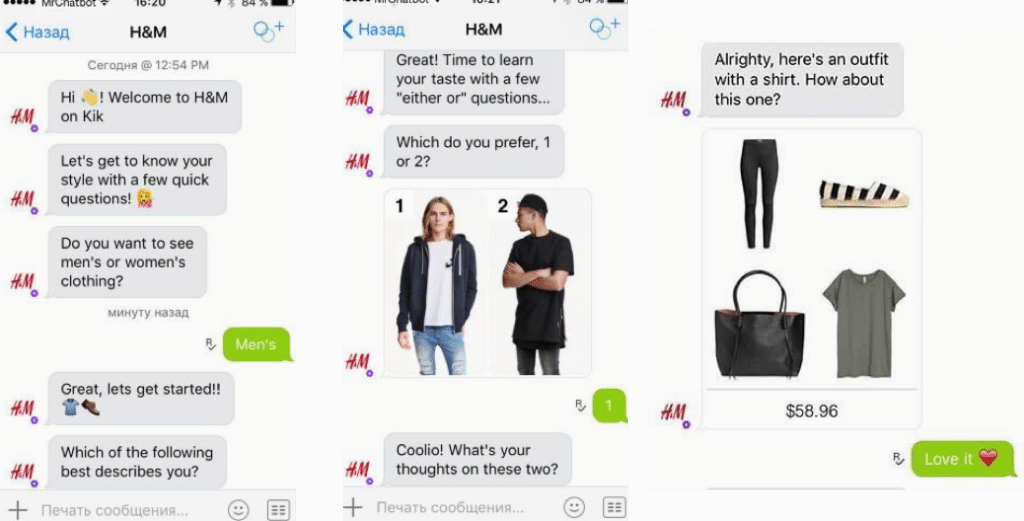
In addition, chatbots let you gather invaluable data on customer preferences, helping you refine future marketing strategies.
So, if you’re steering the marketing for a brand with an extensive product line spanning hundreds of items like the lingerie brand 3Wishes, a chatbot becomes an invaluable tool.
For example, a customer lands on your website, perhaps feeling overwhelmed by the choices. Enter your custom bot, ready to offer relevant products to customers for a personalized experience.
Your chatbot can ask:
- What colours do you prefer?
- Do you have a price range in mind?
- What type of lingerie are you looking for?
- Do you want a lingerie set instead of individual pieces?
Based on the answers, it can suggest specific lingerie items, accessories, or special offers that match the customer’s preferences.
For a lingerie brand, where choices are personal, your chatbot further elevates the shopping experience. It doesn’t just simplify the selection process; it tailors it, making lingerie shopping enjoyable and exclusive.
Beyond sales, the insights gathered from these interactions are gold mines, revealing customer preferences and desires. This can guide you in developing your future lingerie collections and marketing campaigns, boosting the brand’s allure.
6. Upsell & Cross-Sell
Upselling and cross-selling are strategies to encourage customers to purchase a higher-end product or an additional item, respectively.
What is a chatbot’s role?
They’ll analyze user preferences and guide customers to relevant content that complements their initial choice. With this proactive approach to expose them to a wider product range, chatbots boost customer engagement and increase the average transaction value.
For instance, let’s say you’re managing an MMA streaming platform. When a customer signs up for a basic monthly subscription, your chatbot should pop up and ask this to upsell:
- Would you like to upgrade to our premium plan for exclusive behind-the-scenes content and discounted pay-per-views?
To cross-sell, program your chatbot to ask this:
- Interested in our exclusive fight-night commentary? Add it to your package now!
These aren’t just random queries, it’s a calculated strategy to improve the sales process and maximize revenue. It guarantees a more personalized, efficient, and profitable customer journey.
Additionally, when customers feel their needs are anticipated and met, it elevates customer satisfaction. Hence, your chatbot also optimizes the entire shopping experience.
7. Loyalty Programs & Promotions
Loyalty programs and promotions are designed to reward repeat customers and incentivize new ones, ultimately expanding your customer base. Chatbots automate the promotion and management of these programs.
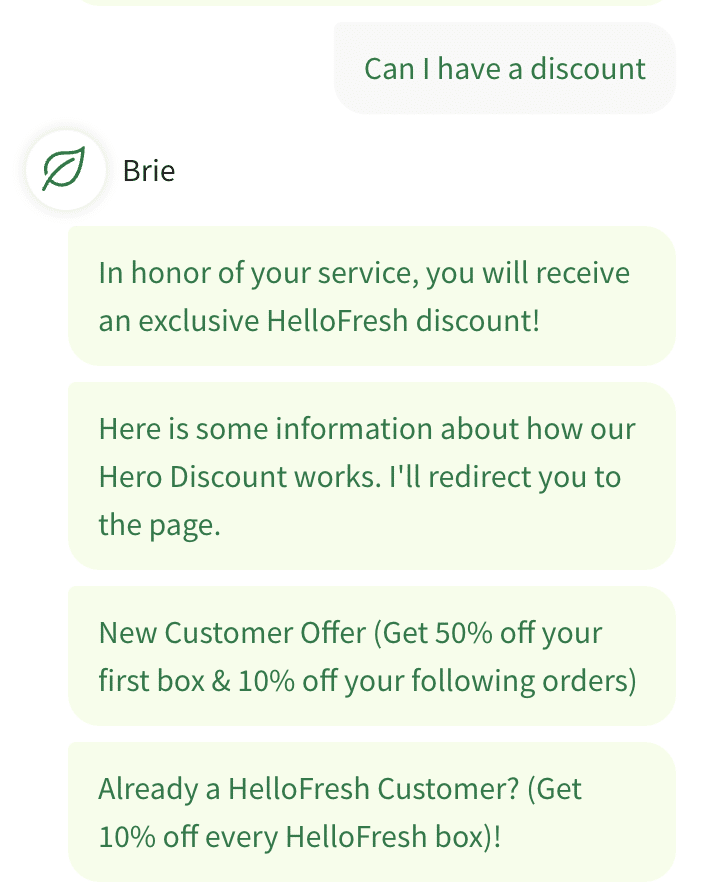
Ask targeted questions like “Would you like to join our loyalty program to earn points for every purchase?” or “Interested in getting 20% off your next order?” to engage users. Plus, by giving them access to exclusive content and offers, you’ll make your customers feel valued.
With chatbots, you can turn a one-time interaction into an ongoing relationship, maximizing your profits and reducing your customer acquisition costs.
Now let’s dive into the best implementation practices to maximize your resources and achieve marketing efficiency.
4 Best Practices For Implementing Chatbots
Go from concept to execution seamlessly and have a chatbot that functions and thrives based on your business goals. How?
With these 4 best practices, you’ll unlock techniques to turn your chatbot from a mere tool into a strategic marketing asset that gives you a competitive edge.
A. Set Objectives
Before anything else, set clear marketing objectives to have a roadmap for your chatbot marketing strategy. Without objectives, you’re essentially driving blind, unsure of what success even looks like.
Identify what you want to achieve. Are you looking to reduce your team’s manual work? Boost product demo bookings? Improve customer engagement? Increase sales?
Once you have your answers, tailor your marketing chatbots to meet these specific objectives.
For example, if customer engagement is your aim, program your chatbot to offer personalized product recommendations. If it’s sales, set it up to upsell or cross-sell.
With detailed direction, you can build a chatbot that guarantees every interaction is a step to achieving your broader marketing goals.
B. Design Conversational Flows
Guarantee a smooth and intuitive chat experience by programming your chatbots with conversational flows.
How do you achieve this?
Identify common questions or issues your customers face. Then, map out how your chatbot should respond, guiding the conversation to a resolution or desired action. For more complex issues, design the flow to escalate the query to a human agent seamlessly.
Here’s an example of a do and don’t for conversational flows if you’re selling digital downloads or products:
Do:
Customer: “How does your platform work for selling my digital art?”
Chatbot: “It’s simple and user-friendly! You can upload your digital product and set your price, and we’ll help you promote it. Would you like a detailed walkthrough?”
Customer: “That sounds great! How do I start?”
Chatbot: “Fantastic! Let’s begin with the sign-up process. Once you’re in, I’ll guide you through each step. Ready to dive in?”
Don’t:
Customer: “How does your platform work for selling my digital art?”
Chatbot: “We sell digital products. Please refer to our FAQ for more details.”

Dialogflow or Microsoft Bot Framework can help you create these flows with ease. With a well-designed flow, you’re effectively guiding the customer journey. Plus, it makes automated interactions feel personalized and effective.
C. Integrate With Other Marketing Tools
Marketing involves various components. Connecting your CRM systems, email marketing platforms, and analytics dashboards to your chatbot will let you develop a data-driven strategy. This makes your chatbot marketing efforts more targeted and effective.
Use platforms like Zapier to connect your chatbot to different apps and automate workflows. You can also use chatbot platforms that offer built-in integrations like Chatfuel, making the process even more seamless.
D. Train Your Chatbot Continuously
A well-trained chatbot can adapt to new customer behaviours, questions, or market trends. Think of your chatbot like an athlete; continuous training improves peak performance and it guarantees it remains an effective tool in your marketing arsenal.
You can train your chatbot by regularly updating its data sets and using machine learning algorithms to analyze customer interactions. IBM Watson or Wit.ai can assist in this ongoing training.
For example, if you notice that your chatbot struggles with handling queries about a new product, you can feed it more data related to that product and train it to respond more accurately.
However, it’s not just about making your chatbot smarter, teach it to give your customers a more personalized experience. Program it to offer a more tailored experience like suggesting a product to the right customer at the right time.
Just visualize having a chatbot smartly recommending your new product as a perfect holiday gift, and even sending a personalized holiday greeting to go along with it if they are returning customers.
Your chatbot can also do it the other way around. Program it to send a warm holiday message first and then have it seamlessly transition into recommendations for your seasonal products.
Wouldn’t that be amazing for users?
You can feed it relevant holiday messages that will go along with your seasonal products. A well-crafted greeting can uplift the customer’s mood, making them more receptive to what you have to offer. Strike the perfect balance between sentiment and sales to turn a simple greeting into an opportunity to showcase relevant products.
Conclusion
In today’s continuously automated world, chatbot marketing isn’t just an option but a necessity to boost your marketing efforts. When implemented correctly, chatbots redefine customer engagement, streamline your sales process, and provide invaluable data to refine your marketing strategies.
However, the work doesn’t stop once your chatbot is up and running. The most successful chatbot marketing strategies are those that evolve. So continue to evaluate your bot’s performance, train your chatbot to adapt to new customer behaviours, and tweak your strategies based on real-world data.
How do you keep up with chatbot trends?
Tecuy is your willing partner to provide you with the latest news in business, technology, AI, and marketing. But not just any news. The articles are free from rampant fake information. With various in-depth guides, you’ll stay ahead of the competition.
Sign up and subscribe today, so you won’t miss any updates.






